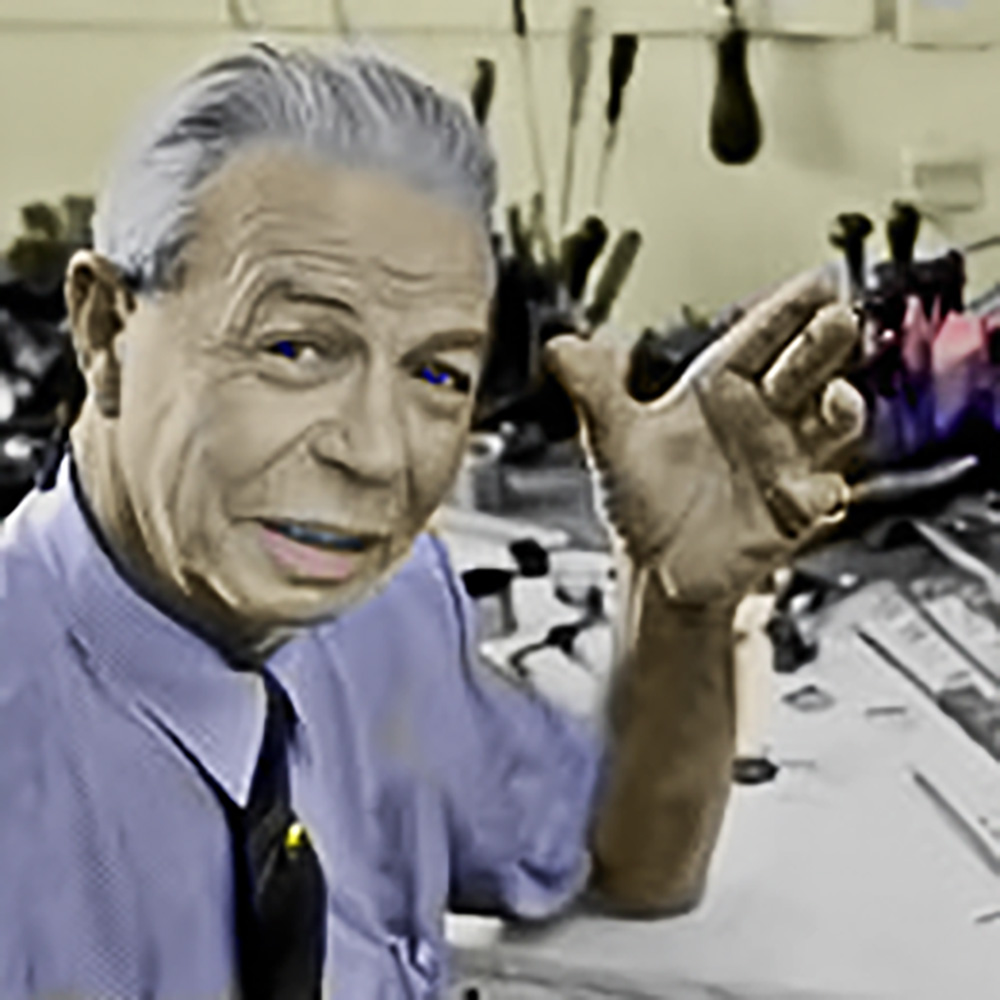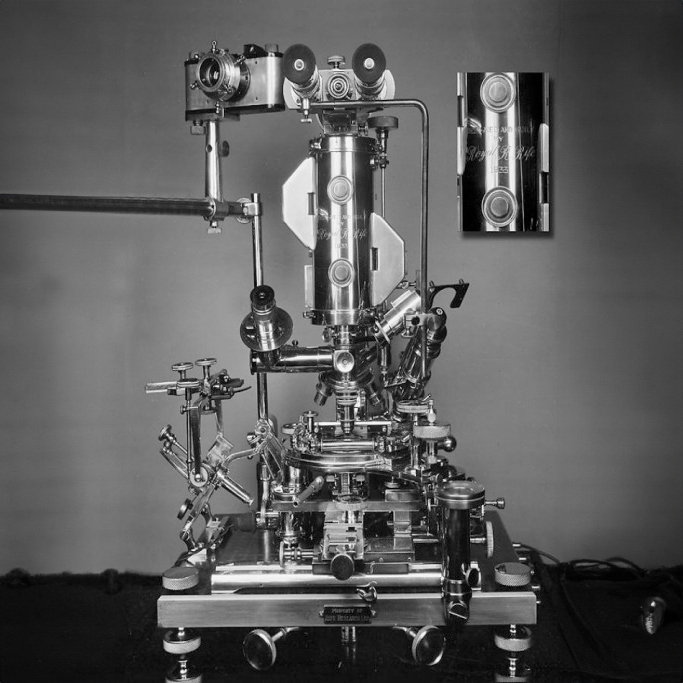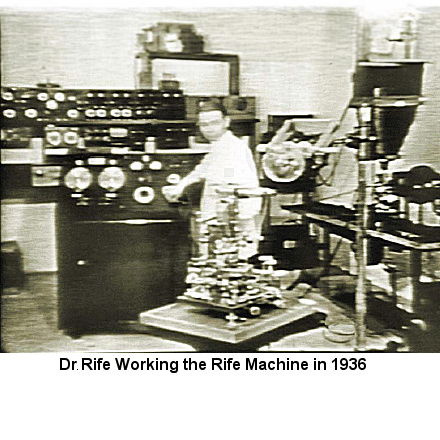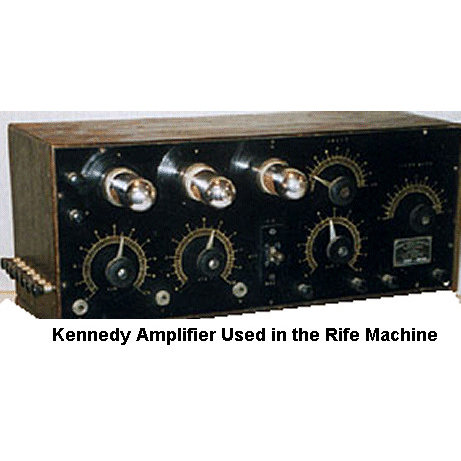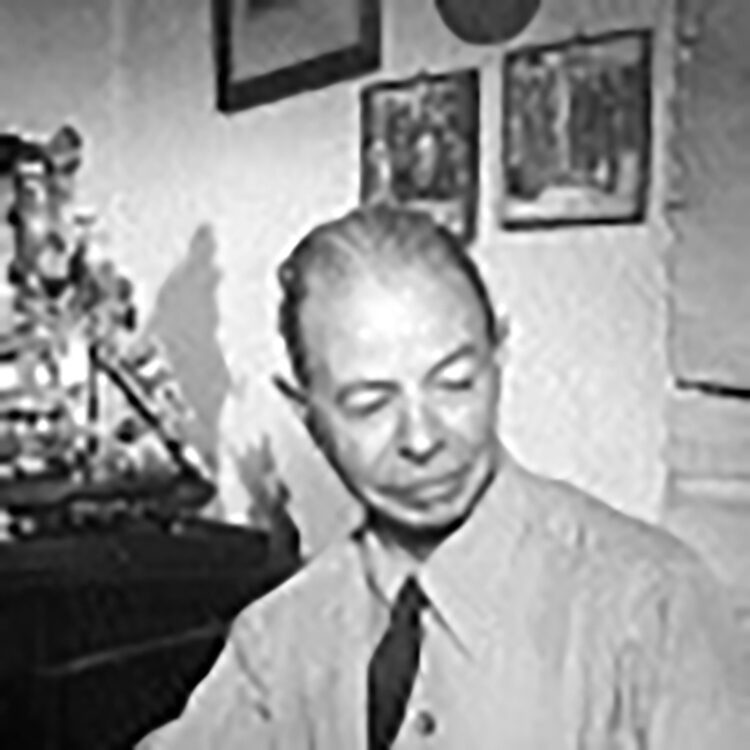
Rife Searches for the Cancer Virus
Rife began using Kendall’s “K Medium” in 1931 in his search for the cancer virus. In 1932, he obtained an unulcerated breast mass that was checked for malignancy from the Paradise Valley Sanitarium of National City, California. But the initial cancer cultures failed to produce the virus he was seeking. Then a fortuitous accident occurred.
The May 11, 1938 Evening Tribune of San Diego later described what happened: “But neither the medium nor the microscope were sufficient alone to reveal the filter-passing organism Rife found in cancers, he recounted. It was an added treatment which he found virtually by chance that finally made this possible, he related. He happened to test a tube of cancer culture within the circle of a tubular ring filled with argon gas activated by an electrical current, which he had been using in experimenting with electronic bombardment of organisms of disease. His cancer culture happened to rest there about 24 hours (with the current on the argon gas fitted tube), and then he noticed (under the microscope) that its appearance seemed to have changed.
He studied and tested this phenomenon repeatedly, and thus discovered (cancer virus) filter-passing, red-purple granules in the cultures.” Later he perfected this procedure-cancer culture in “K Medium” followed by the argon treatment with the gas-filled tube lighted for 24 hours by a 5000 volt electric current. Then it was placed in a water bath with 2 inches of vacuum and incubated for 24 hours at 37.5 degrees Centigrade.
Rife believed the gas-filled tube ionized the cancer culture and this was counteracted by the oxidation in the water vacuum. Some chemical constituents of the organism were so changed that it Rife’s laboratory notes-for November 20, 1932 contain the first written description of the cancer virus characteristics. Among them are two unique to his method of classification using the Rife microscope: angle of refraction 12-3 / 10 degrees color by chemical refraction purple-red When Rife copyrighted his discovery in 1953, the angle had changed to 12-3 / 16 degrees. Perhaps that was his intent all along and the notes were hastily written. The size of the cancer virus was indeed small. The length was 1 / 15 of a micron. The breadth was 1 120 of a micron. No ordinary light microscope, even in the 1980s, would be able to make the cancer virus visible.
Rife and his laboratory assistant E. S. Free proceeded to confirm his discovery. They repeated the method 104 consecutive times with identical results. In time, Rife was able to prove that the cancer microorganism had 4 forms: BX (carcinoma) BY (sarcoma-larger than BX) Monococcoid form in the monocytes of the blood of over 90% of cancer patients. When properly stained, this form can be readily seen with a standard research microscope Crytomyces pleomorphia fungi-identical morphologically to that of the orchid and of the mushroom Rife wrote in his 1953 book: “Any of these forms can be changed back to ‘BX’ within a period of 36 hours and will produce in the experimental animal a typical tumor with all the pathology of true neoplastic tissue, from which we can again recover the ‘BX’ micro-organism.
This complete process has been duplicated over 300 times with identical and positive results.” Rife continued: “After one year, we take this same stock culture of dormant crytomyces pleomorphis fungi and plant it back on its own asparagus base media; there is no longer a crytomyces pleomorphia, no longer a monococcoid organism such as is found in the monocytes of blood, there is no longer a ‘BX’ or ‘BY’ form, but there is, from the initial virus isolated directly from an unulcerated human breast mass, a bacillus coli, that will pass any known laboratory methods of analysis.” Rife had proved pleomorphism. He had shown how the cancer virus changes form, depending on its environment. He had confirmed the work of Bechamp, of Kendall, of Rosenow, of Welch and an army of pleomorphist bacteriologists who would come after him and have to battle the erroneous orthodox laws of Rivers and his legions of followers. Rife said, “In reality, it is not the bacteria themselves that produce the disease, but the chemical constituents of these micro-organisms enacting upon the unbalanced cell metabolism of the human body that in actuality produce the disease.”
We also believe if the metabolism of the human body is perfectly balanced or poised, it is susceptible to no disease.” But Rife did not have time to argue theory. He would leave that for others. After isolating the cancer virus, his next step was to destroy it. He did this with his Royal Rife Machine over and over again. And then he did it with experimental animals, inoculating them, watching the tumors grow, and then killing the virus in their bodies with the same Royal Rife Machine tuned to the same “BX” frequency. Rife declared in 1953: “These successful tests were conducted over 400 times with experimental animals before any attempt was made to use this frequency on human cases of carcinoma and sarcoma.” By 1934, Rife was ready to use his Royal Rife Machine on humans. He was ready to cure cancer.
